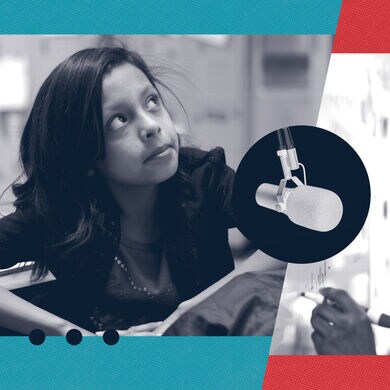
Episode 1: Microschool, Major Changes
Reimagining education by getting to the heart of the matter.
Jonathan Santos Silva takes us to the North-Phillips School of Innovation in Tarboro, N.C.—a school reimagined from the ground up by leaders and students. In listening to the students and their community, leaders get to the heart of what matters. Learn more about the challenges and successes of their approach.
About the Show
Changing Course is a podcast from Teach For America’s One Day Studio that explores what’s possible when schools empower students in their own educational paths. Every episode, host Jonathan Santos Silva shares stories from students, teachers, and administrators about how they’ve reinvented traditional approaches to traditional education.
Meet The Host
Jonathan Santos Silva
Jonathan Santos Silva (South Dakota ‘10) is the Founding Executive Director of The Liber Institute and creator and host of The Bored of Ed, a podcast that amplifies the voices of inspiring BIPOC educators who are changing the face of education. He has provided technical support to South Dakota’s Native American Achievement Schools and has served as a school founder and principal, instructional coach, and education consultant.
Featured In This Episode
Jamilah Bullock, Lead Designer, 11th & 12th Grade Experiences
Jamilah serves as the Lead Designer for 11th & 12th Grade Experiences at North Edgecombe High School where she designs and implements key learning experiences for juniors and seniors. Additionally, she supports teachers across all content areas in curriculum planning and social-emotional learning and engagement. Previously, she served as the Coordinator of the North-Phillips School of Innovation Micro School and as an assistant principal of grades 6-12. She also served as an Impact Leader with Profound Ladies, an organization that equips women educators of color with the mentorship, training, leadership and career development pathways so their students will experience the impact of a thriving woman of color leading their education. In 2020, she was nationally recognized by the Leadership for Educational Equity as a BIPOC Emerging Policy and Advocacy Leader.
Sayre Man, Lead Designer
Sayre is an educator with a passion for designing authentic learning experiences that empower young people. She has been part of the North Edgecombe team since 2016, when she was placed there through Teach for America.
Zy'Kendrick Hyman, Student
Zy'Kendrick Hyman (he/him) is a sophomore at North Edgecombe High School. He is a student leader who has served on many committees, including Resources for Resilience, Student Leadership, and the Student Activities committee. He loves to support his peers by giving advice and motivating them to be their best selves. In his free time, he enjoys reading, singing, and hanging out with his friends. His main motivations are his mom and his best friends because they give him inspiration about his place in the world and accept him for who he is.
Sha'Kiyia Highsmith, Student
Sha'Kiyia Highsmith (she/her) is a junior at North Edgecombe High School. As a student leader, she is a member of the National Honor Society. After high school, she plans to attend Winston Salem State University to study psychology or business. In the future, she hopes to start her career as a therapist, supporting youth and the LGBTQIA+ community. In her free time, she enjoys listening to music and traveling.


